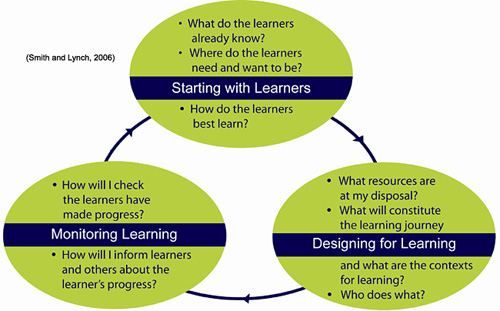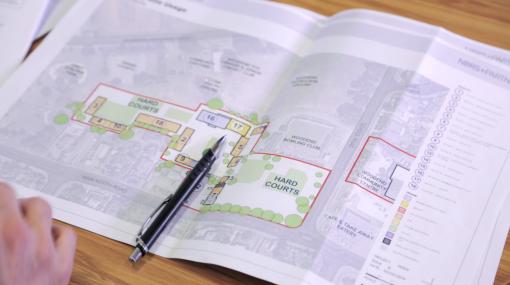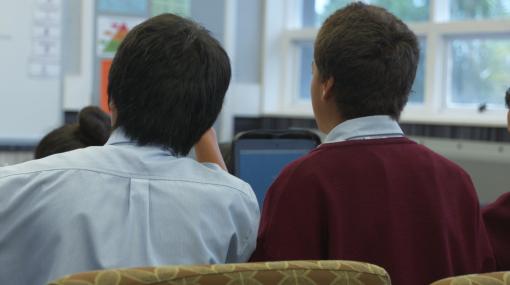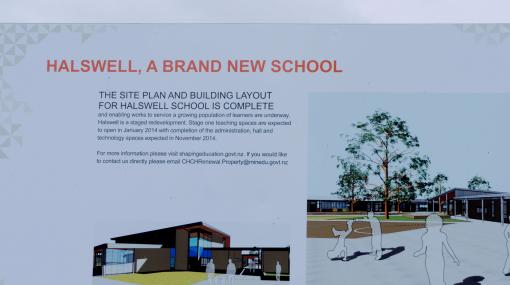Innovative learning environments
Space, whether physical or virtual, can have an impact on learning. It not only brings people together – it can encourage and facilitate exploration, collaboration, and discussion.
What is an innovative learning environment?
Innovative Learning Environment (ILE) is a term used in New Zealand and internationally to refer to the wider ecosystem of people (social), practice (pedagogical) and physical/property.
An innovative environment is one that is capable of evolving and adapting as educational practices evolve and change – thus remaining future focused. An innovative environment supports strengths-based teaching and learning. It offers students and teachers flexibility, agency, ubiquity, and connectedness.
Working in an innovative learning environment where teaching and learning is collaborative, reflections and inquiries are shared, and communities engaged leads to a more robust, continuously improving community of practice.
What is a quality learning environment?
Quality Learning Environment (QLE) relates to the physical learning environment. Physical spaces are only a part of the contribution to an innovative learning environment.
More information »
- Designing quality learning spaces – Design guidelines ensure that the physical environment in schools supports quality education.
- Quality learning environments – Information and practical examples on Enabling e-Learning
Key resources
Designing learning environments
A definition, examples of ILEs, and an explanation of how to create these spaces.
Planning an innovative learning environment
An Inclusive Education guide providing strategies and suggestions for developing ILEs that work for all learners.
Enabling e-Learning resources
These pages contain school stories, snapshots of learning, and resources to support strengths-based teaching and learning in innovative learning environments.
Teaching in an innovative learning environment – Getting started
A learning space should be able to motivate learners and promote learning as an activity, support collaborative as well as formal practice, provide a personalised and inclusive environment, and be flexible in the face of changing needs.
Place the learner at the centre
ILEs enable you to shift from a one-size-fits-all approach to a flexible approach that can be customised and adjusted for individual needs. Students should be at the centre of your planning.
Build the environment around the students needs, rather than requiring students to fit within the system you plan.
Develop your environment to provide support for learners that is respectful of, and responsive to, individual learner preferences, needs, and values. Innovative learning environments should provide more opportunities for students to organise themselves and engage in learning.
Consider how you can plan for:
- learners having more agency to plan what they need to work on, how they will do this, and where they will do this
- collaboration between students
- the needs of particular groups and individuals being met
- a greater focus on self directed learning, including emphasis on learners taking more responsibility for accumulating evidence of their learning for assessment purposes
- assessment tasks that meet the needs of the learner.
Caroline Marris, year 7 and 8 team leader at Woodend School, discusses how students contributed to the design of their innovative learning environment. Through an inquiry over a term students researched into what ILEs are and used the information to plan spaces and ways of working they thought would work for them. Students, Justin and Ashleigh, explain how their space works and how they plan and manage their work each week.
Students know the kind of environments and approaches that work best for them to learn. Different students need different things. When you design your space consider how you will create systems and spaces that ensure the needs of all students are catered for. Consider how you will plan and design for:
- students who are sensitive to noise
- students who are easily over stimulated
- students who need support to manage themselves and their work.
Kurt Soares and Kirsty Soames, from South New Brighton School, describe how they started team teaching and constructed a collaborative space from a traditional classroom with their students. Supporting students to be self-directed learners is their underpinning pedagogy.
"It’s been an easy process and it’s certainly improved learning in my class."
They began by involving the students in designing their own learning spaces. They followed a design process based around the school vision, which is to be a community of quality learners nurturing the values of citizenship, achievement, responsibility, and effort.
Students considered:
- how they learn best
- using technologies as part of learning
- collaborative learning
- working independently.
Students created this video explaining how they designed their learning space. They describe how the learning systems are setup in the classroom for their success.
In this video from the Grow Waitaha project, staff discuss the design of a flexible learning environment to support authentic learning in the new Rakahuri hub at Rangiora High School in the classroom for their success.
Modifying your traditional classroom
Lucy Fong, year 3 and 4 team leader at Woodend School, explains how her team used their existing space develop an innovative learning environment. Lucy discusses their transition from single cell classrooms to a collaborative learning environment. This required them use existing spaces creatively, while focusing on student learning needs.
Tamaki College teacher, Noelene Dunn describes how she set changed her classroom into a flexible learning space and the innovative practices she uses to support learning. Year 10 student, Taylor describes how the ILE the helps his learning.
Teachers describe modifying their classrooms to create innovative learning environments
Remake your class: Exploring a collaborative learning environment
The transformation of a crowded classroom to a space that facilitates new and deeper ways of teaching and learning, enabled by the physical changes – part three of a series on YouTube.
Student designed learning spaces
In this EDtalk, Anne Keneally talks about her decision to create a radically different learning space for her students from the one they are used to. After a year long journey, visiting classrooms around New Zealand, she is now awaiting the arrival of her students to begin her trial of "doing learning differently."
Creating learning spaces
In this EDtalk Anne Kenneally explores the changes in her students' learning as a result of allowing them to take the lead in deciding what spaces they need for different activities.
Working collaboratively
The development of an ILE means your approach to teaching can be much more collaborative and flexible. An innovative learning environment does not need to be a new build; it is a new way of working collaboratively.
Key things to consider before you move into or develop your ILE are:
- communication between team members
- planning collaboratively – tools and approaches
- planning flexible learning approaches
- assessment – creating effective systems and sharing data.
Gabrielle Nuthall, teacher at Halswell School, talks about the preparation that took place before they transitioned into their innovative learning environment. They found a management system that worked really well in a single cell classroom and also proved successful in their ILE. Because students and teachers were already familiar with the system the transition into their new space was much smoother.
Lisa Dovey, year 7–8 team leader at Halswell School, discusses the benefits of collaborative teaching. Her team uses Google Docs and Google Hangouts to support collaborative planning, teaching, and assessment. She explains, "We do a lot of planning together, which is really fantastic. It means that all of our strengths are put together."
More information »
- Collaborative teaching
– Using school examples and NZ research, this page explains:
- pedagogy underpinning a collaborative approach
- how to develop collaborative capabilities within your team
- approaches to collaborative teaching.
Creating an inclusive, culturally responsive innovative learning environment
When designing the systems and spaces in your ILE, consider all the students. Use a inclusive pedagogy underpinned by Universal Design for Learning approach. This means designing an environment to be usable by all people, to the greatest extent possible, without the need for adaptation or specialised design.
Culturally located learning spaces
Janelle Riki discusses how to make innovative learning environments culturally located for Māori students. Janelle believes schools should consider whether or not they provide spaces where Māori students are able to learn through their culture and about their culture.
Modern learning through a Pasifika lens
Anthony Faitaua discusses 21st century Pasifika learners with regard to modern learning pedagogy in this EDtalk. He acknowledges the challenge: how to address the traditional Pasifika view of learners as respectful listeners, and encouraging them to engage and collaborate. Anthony advocates creating a safe environment, understanding the students’ culture and values, and working with key influential community members in order to build these vital learning relationships.
More information »
Engaging with parents and whānau
The move to an ILE can be concerning for some parents. They may worry their child will be lost in the environment or that their needs will not be met.
Starting out with an ILE
If you are in the initial stages of planning an ILE ensure that you connect with parents and whānau.
- Show them what an ILE looks like and explain the advantages of working in this environment.
- Listen to parents concerns and clearly address those concerns – explain and demonstrate how these will be addressed.
- Have an open-door policy, invite parents and caregivers into the environment so they can see it in action and be a part of it.
Students moving into an ILE from a single cell classroom
Your school maybe in transition into an ILE. For those parents who's children are moving from a single cell classroom to an ILE, they may feel concerned about their children being "lost".
Build understanding of the ILE with your parent community. Before the beginning of the school year:
- invite them into the environment, have an open-door policy so parents can pop in and have a look at what happens
- explain the purposes for things and how systems work
- where possible, get to know your students before they arrive – pay particular attention to students who may have disabilities or learning difficulties and plan systems and spaces each year that will specifically address those needs
- meet with parents, they know their children best, find out their concerns, how their child likes to learn etc and build this into your approach.
Learning design: How the people-based design process works
Learning design is the practice of planning, sequencing, and managing learning activities, usually using ICT-based tools to support both design and delivery. Learning pedagogy and design-theory meet to define a people-based, flexible learning environment.
Steve Collis explains how the design process can connect with students to redefine the way we organise our learning environments. When thinking about learning environments, the design process starts with empathy for the people you are designing for. Once the goals have been defined and the vision shared, experimentation and innovation occurs as a successful learning design is developed.
"Our schools are full of students who want to engage, socialise, communicate, create, and collaborate in meaningful ways that reflect the world in which they live."
A model of learner centred design
Lynch, D. & Smith, R. (2006). The learning management design process, in R Smith & D Lynch (eds), The rise of the learning manager: changing teacher education. Pearson Education Australia, Frenchs Forest, NSW, pp. 53-67.
Learning spaces: Campfires, caves and watering holes
"This construct of learning spaces allows teachers to adapt the learning to meet the needs of students - to personalise instruction and allow students to explore different modes of learning."
Professor David Thornburg (2007) has given us three very useful terms for thinking about the different kinds of spaces in which learning takes place: the campfire, the cave, and the watering hole.
Campfires
The campfire has traditionally been a place of knowledge-sharing and story telling. This is where information is transferred, traditionally by an expert, to be built upon by others in the group. Thornburg reminds us that in today's schools, it is not just the teacher taking on the "expert role", but also students who are "empowered to tell stories and share their learning with peers".
Watering holes
The watering hole is a space for small group discussion and collaboration.
Caves
"The cave is a private space where an individual can think, reflect, and transform learning from external knowledge to internal belief."
The cave is the quiet space where students and teachers can be alone with their reflections. The perfect place is the beenbag between the bookshelves, or the secluded patch in the garden; a place where content cements in the mind, goals are set, and metacognition occurs.
Director of innovation, Steve Collis (Sydney Centre of Innovation in Learning) explains Professor David Thornburg's terms cave, campfire, and watering hole, and the different functions of these spaces in your learning environment. Steve describes how these functions can occur in a virtual space as well as a physical space.
Sydney Centre of Innovation and Learning – caves, campfires, and watering holes
In this timelapse video, Steve Collis illustrates how the cave, campfire, and watering hole look inside an innovative learning environment. The spaces are flexible and are defined by the action of the people in them.
More information »
- David Thornburg (2007), Campfires in cyberspace: Primordial metaphors for Learning in the 21st Century
- Ann Davis and Kim Kappler-Hewitt (2013), Australia's campfire's, caves, and watering holes – This article details some real-world examples of Thornburg's learning spaces in practice in Australian schools.
Flexible learning environment
Design a flexible learning environment
Design your flexible learning environment to remove as many constraints to learning as possible. These constraints could be:
- physical (the physical space of the classroom, for example, its walls and desks)
- virtual (barriers to technology)
- and cultural (attitudes and beliefs that constrain learning).
A flexible learning environment strives to be democratic by offering "more space for more people more of the time". At it's heart, a flexible learning design is inclusive by allowing for different learning styles and more experimentation. It allows students and teachers to move more seamlessly through different kinds of learning spaces, both physical and virtual, by ensuring that the environment remains flexible.
Steve Collis
Steve Collis (Sydney Centre for Innovation in Learning) answers the question, "What is a flexible learning environment?" He talks about the physical, virtual, and cultural layers that are involved and how they work together to create this environment.
More information »
School stories
These stories demonstrate how students, teachers and school leaders have planned for, collaborated on, and developed innovative learning environments. This includes creating physical and virtual spaces, and processes to support learning and teaching.
Filter by: Collaborative learning Student agency Infrastructure Personalising learning e-Leadership Learning design Technology
Sorry, no items found.
Resources and research
Key resources
Designing learning environments
This section of the Ministry of Education's website provides information and readings on developing learning environments that facilitate a variety of approaches to teaching and learning.Planning innovative learning environments
An Inclusive Education guide providing strategies and suggestions for developing ILEs that work for all leaners.The OECD handbook for innovative learning environments
This handbook provides practical tools for teachers and leaders to develop innovative learning environments. It focuses on: using the principles of learning to design learning environments, the 7+3 framework, evaluative thinking, and transformation and change in learning ecosystems.
This report (2015) from University of Salford (UK) shows clear evidence that well-designed primary school classrooms boost children’s learning progress in reading, writing, and maths. Three types of physical characteristic of the classrooms were assessed: Stimulation, Individualisation and Naturalness – the SIN design principles.
Planning matrix | Te Poukapa Taiao Ako Auaha
This planning matrix supports schools and early years centre leaders to prepare for the creation of innovative learning environments, whether as part of a re-development of an existing school/centre, or when building a new facility.
A 2015 blog post by Derek Wenmoth discussing what an innovative or modern learning space is and the pedagogy and practice within that space the creates successful learning for students.
Research
Conditions for effective smart learning environments
Smart learning environments (SLEs) are defined in this paper as physical environments that are enriched with digital, context-aware and adaptive devices, to promote better and faster learning. This paper provides an analysis of how "human learning interfaces" are used to identify the conditions for the development of effective smart learning environments.
Schooling redesigned: Towards innovative learning systems
What does redesigning schools and schooling through innovation mean in practice? How might it be brought about? These questions have inspired an international reflection on “Innovative Learning Environments” (ILE) led by the OECD.
Education leaders sabbatical reports tagged Modern Learning Environments
Sabbatical reports provide local research into learning environments that enable successful 21st century learning.
Online discussions
Discussion focused on building knowledge about MLE pedagogy and technologies at new entrant and year 1 level. A crowd sourced resource Modern learning environments in the junior school is being developed in this group.
































